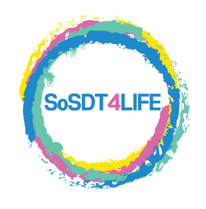Cancer has been one of the deadliest diseases known to mankind, and the search for a cure has been a constant battle. Over the years, several methods have been developed to treat cancer, but the fight against it remains challenging.
Traditional cancer treatments, such as chemotherapy and radiation therapy, are often the go-to options for cancer patients. However, these treatments come with many side effects that can be debilitating and can also compromise the immune system. Acupuncture, massage, and herbal cures have all gained popularity as alternative and complementary cancer treatments in recent years. The application of cutting-edge technology and research has given rise to a new optimism in the fight against cancer. SonoDynamic therapy is one such technology that is gaining prominence due to its potential to transform cancer treatment. In this blog, we’ll look at how SDT technology is transforming the way we think about cancer treatment and giving cancer patients fresh hope.
The Science Behind SonoDynamic Therapy
SonoDynamic therapy is a type of cancer treatment that uses ultrasound and a sonosensitizing agent to selectively destroy cancer cells. SDT works by using a sonosensitizer agent that, when activated by ultrasound waves, produces reactive oxygen species (ROS) that can destroy cancer cells. The sonosensitizer agent is typically injected into the bloodstream and is absorbed by cancer cells more than normal cells. Once the sonosensitizer agent is absorbed by cancer cells, ultrasound waves are used to activate the agent and produce ROS, which destroys the cancer cells. SDT has been shown to be effective against a variety of cancers, including breast, lung, prostate, and liver cancers.
Advantages of SDT technology
SDT has several advantages over other cancer treatments. It is a non-invasive treatment method and does not have the same side effects as traditional treatments like chemotherapy and radiation therapy. This is because SDT targets only cancer cells, leaving healthy cells unaffected. Additionally, SDT has been shown to be effective in treating various types of cancer, including prostate cancer, breast cancer, and lung cancer.
Another advantage of SDT is that it can be combined with other treatments, such as chemotherapy. The combination treatment is called “SonoDynamic Chemotherapy” (SDCT) and has shown promising results in clinical trials. SDCT can improve the effectiveness of chemotherapy therapy by increasing the sensitivity of cancer cells to the drugs. SDT can also help reduce the side effects of these treatments by reducing the dosage required. SDT also can be combined with targeted therapy, immunotherapy or radiation therapy to enhance those treatment as well.
Our Approach to Cancer Treatment
At SoSDT4Life, our approach to cancer treatment is patient-centered. We believe in providing an integrative and holistic approach to cancer treatment. We understand that cancer treatment can be a difficult and emotional journey, which is why we strive to provide a supportive and compassionate environment for our patients. We work closely with each patient to develop an individualized treatment plan. This approach involves combining conventional cancer treatments with complementary and alternative therapies to improve patients’ overall well-being and quality of life. Additionally, many alternative therapies, such as yoga and meditation, can help reduce stress and anxiety, which can be especially helpful for cancer patients who may be experiencing a range of emotions.
As the therapy is non-invasive, there are no surgical incisions or damage to healthy cells. It is also painless and requires no anesthesia. The patient can carry on with their daily activities immediately after the therapy session, making it a convenient option for those with busy schedules.
The effectiveness of SoSDT technology has been proven through numerous studies and clinical trials. In a study conducted by Guangzhou Medical University, 90% of the patients showed significant improvement in their condition after undergoing SoSDT therapy. Another study published in the Journal of Cancer Research and Therapeutics showed a 75% improvement in the quality of life of cancer patients after receiving SoSDT therapy.
SoSDT technology has the potential to revolutionize cancer treatment by providing a safe, effective, and non-invasive alternative to traditional treatments such as surgery, chemotherapy, and radiation therapy. It is especially useful in cases where conventional treatments have failed or are not an option due to various reasons. Moreover, SoSDT technology is not limited to cancer treatment only. It can also be used to treat various other medical conditions, such as rheumatoid arthritis, hepatitis, and even skin diseases like psoriasis.
The future of cancer treatment is bright with the development of new and innovative technologies such as SoSDT. As the medical field continues to advance, we can expect to see more breakthroughs in cancer treatment and, hopefully, a cure in the near future.
The potential of SDT technology in cancer treatment has not gone unnoticed, and several hospitals and clinics around the world have started using it. One such hospital is the Foresea Life Insurance Guangzhou General Hospital in China, which offers SoSDT (SonoDynamic Therapy with Sound Waves) as a part of it’s cancer treatment program. Cancertherapies.cc is also a part of this program and offers SDT as a part of their integrative holistic treatment solution.
Foresea Life Insurance Guangzhou General Hospital is a renowned hospital specializing in cancer treatment. With the addition of SDT technology to their treatment options, they can provide an even more effective and comprehensive treatment program for cancer patients.
The use of SDT technology in cancer treatment is still in its early stages, and more research needs to be done to fully understand its potential. However, the initial results are promising, and it could be a game-changer in the fight against cancer. With the help of innovative technology and research, we can hope to find a cure for cancer one day.

Leave A Comment
You must be logged in to post a comment.